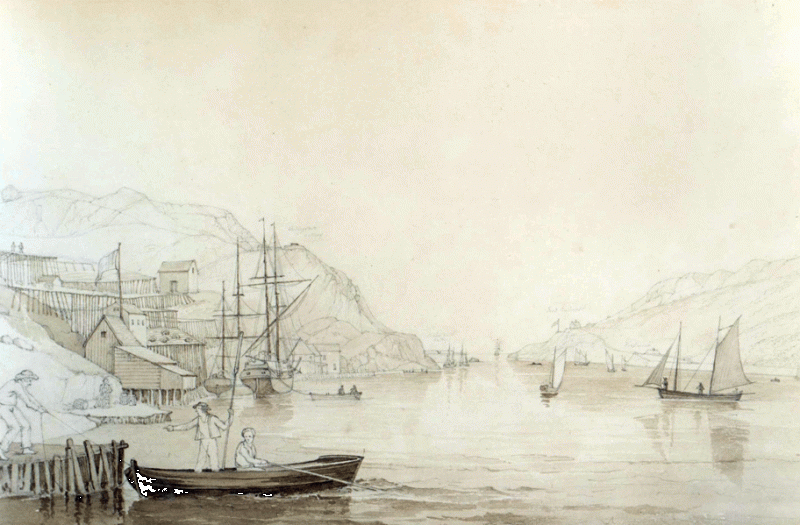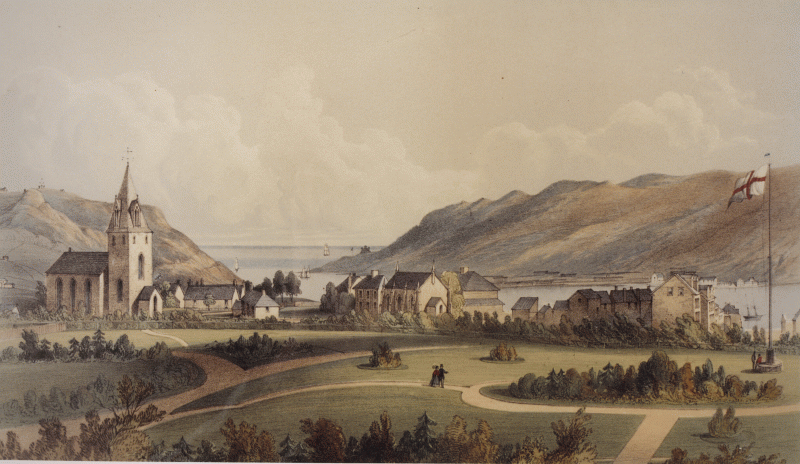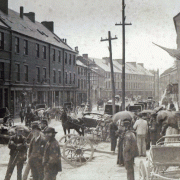Timeline
 Settlement History
Settlement History
Under the Streets
How St. John’s was named
St. John's, the capital of the province Newfoundland and Labrador in the country of Canada, has experienced a long and colourful history.
Europeans began visiting the sheltered harbour around the beginning of the sixteenth century during the latter part of the Italian renaissance period. Due to its proximity to fishing grounds, St. John’s gained prominence as a commercial trading outpost for the Basques, French, Spanish, Portuguese and English who all engaged in the fishery along the western side of the North Atlantic.
In the late sixteenth century Britain rose as a significant world naval power and with it, their dominant presence in the Newfoundland fishery. St. John's recorded the first permanent settlers in the early 1600s with a family named Oxford establishing a plantation, probably in the area west of Beck's Cove.
Wharves, fish stores, and warehouses were constructed on the north side of the harbour to accommodate the fish trade. A path connecting these premises was the beginning of what today is Water Street, making it the oldest commercial street in North America.
While St. John’s was the primary commercial and service centre for the Newfoundland fishery in the seventeenth and eighteenth centuries, the population increased slowly during this time as the fishery was a seasonal commercial operation rather than offering a place of permanent residence.
During this time St. John’s was a prime military target for any nation wishing to gain control over the important food supply.
Battles over St. John’s harbour

| Timeline | Battle between | Victor |
| 1555 | Basques and French | Basques |
| 1665 | Dutch and English | Dutch |
| Late 1600s to late 1700s | French and English | Series of battles, power exchanged between French and English |
| 1762 | French and English | English |
By the latter part of the eighteenth century the population of St. John's stood at a few thousand based on its trade in the fishery. The Napoleonic Wars in Europe in 1791-2 saw a growth in the demand for salt fish. As prices for ths commodity increased it attracted a large influx of people, primarily Irish immigrants who came to take advantage of the high fish prices and good wages. This led to a substantial increase in the population of St. John's which stood at approximately 10,000 by the end of these wars in 1815. The economic boom in the Newfoundland fishery ended with the conslusion of the war. Fish prices fell and generally remained depressed until the outbreak of the First World War in 1914.
Early Population Growth
| Timeline | Population | Likely Reason |
| Late 1700s | 4000 | Fish trade |
| 1791- 1815 | Large influx of primarily Irish immigrants | Demand for salt fish during Napoleonic Wars |
| 1815 | 10,000 | End of Napoleonic Wars |
St. John's grew slowly throughout the nineteenth century. Ravaged by fire in 1816, 1846 and 1892, the town recovered and rebuilt after each.
Although originally proposed in 1832, municipal government status was first conferred in 1888 with a council of five elected councillors and two government appointees. At that time the population was approximately 30,000 and although there were electric street lights on the main roads and a public water supply, many residents registered complaints about inadequate sewage disposal facilities. Read Under the Streets to learn how the actions taken on this issue has contributed to archeological findings today.
 By the turn of the century electric street cars provided public transit downtown along Water Street, Adelaide Street, Queens Road, Rawlins Cross, and Military Road. Gasoline powered buses replaced the street cars in 1948.
By the turn of the century electric street cars provided public transit downtown along Water Street, Adelaide Street, Queens Road, Rawlins Cross, and Military Road. Gasoline powered buses replaced the street cars in 1948.
In 1921 St. John's was incorporated as a city with the passage of the City of St. John's Act by the Newfoundland government. Today St. John’s remains the commercial centre and political capital of Newfoundland and Labrador.
Under the Streets
The first sewage disposal systems in St. John’s were put in place beginning in the late nineteenth century. The sewage discharge outfalls were directed to St. John’s harbour, and neighbouring communities followed suit when installing their sewage disposal systems.
By the end of the twentieth century, the combined population of approximately 130,000 residents of St. John’s, Mount Pearl and Paradise continued to discharge untreated sewage into St. John’s harbour.
By the early 2000s the St. John’s Harbour Clean-up project was in place, with a plan to treat wastewater before discharging it into the harbour. The Riverhead Wastewater Treatment Facility opened on the south side of St. John’s harbour in 2009.
Archaeology and the Harbour Interceptor Sewer Project
This massive project required an Environmental Assessment, given that two kilometres of sanitary sewer pipe is planned to be installed under the historic downtown streets of the oldest city in North America.
Part of the assessment is a Historic Resources (archaeological) study, which Gerald Penney Associates Limited were hired to conduct.
Since 2004 they have had more than 10 archaeology permits and have registered more than 60 archaeology sites in the area of the sewer installation. Many of these findings are outlined in a public presentation first given in February 2010.
